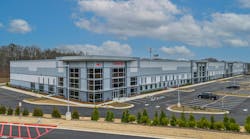The Hillsborough County Water Department's South County Regional Wastewater treatment facility in Sun City, Fla., began an expansion designed to increase its treatment capacity from 3.0 MGD to 4.5 MGD during the mid 1990's. Although structures to increase capacity were the focus of the project, odor control was given special consideration.
The existing plant headworks had been the source of odor complaints from the residents of the Sun City Retirement Village and also other residents and travelers who transit the area of the plant located along the Interstate 75 corridor. Odors associated with the plant had been an issue at local home owner association meetings with their respective county commissioner and had been scrutinized by the local regulatory officials.
The preliminary design for the plant expansion included a packed tower chemical scrubber for odor removal from the facility's headworks and anaerobic selector basins. Water department staff approached the design engineers to consider biofiltration technology for odor removal instead of a scrubber.
Department staff had purchased and installed several pre-manufactured Biocubetrademark Biofilters at pumping stations and the applications had been successful. After documenting the biofilters' performance, staff requested that a similar unit be installed at the treatment facility.
The Biocube biofilter installed at the South County Regional AWT facility has been fully operational for approximately two years. The system sees and treats an average of approximately 100 parts per million of hydrogen sulfide to achieve a 99 percent removal rate. It is estimated that selection of biofiltration for odor control over wet chemical scrubbing has saved the department in excess of $230,000 in chemical costs so far.
How It Works
The entire system operates under an induced vacuum. Air is pulled from the odorous process into a Moisture Integrator where the humidity and temperature are adjusted for optimum metabolic activity.
The Moisture Integrator consists of three trays partially filled with water. Air enters the inner cavity of the center tray, and bubbles up through a thin layer of water. An electric immersion heater heats the water when needed for freeze protection or to increase efficiency. The humidified air leaves the Moisture Integrator saturated with water vapor. The air enters the top of the biofilter and flows down through the biologically active media.
At the base of each tray a plenum evenly distributes air to maximize media productivity. The contaminants are absorbed into the liquid film surrounding the media particles. The microbes that oxidize the contaminant live in this liquid film. The oxidation process uses oxygen out of the air stream and enzymes produced by the microbes to convert H2S and other odorous compounds to sulfate, water and carbon dioxide.
The deodorized air and a small amount of water exit the bottom of the biofilter. The water and air are separated from one another in a Moisture Separator. Collected water is automatically drained off to a sanitary drain once the Separator is full. The dry air is pulled into a blower and discharged to the atmosphere through a small stack.
According to the company, overall hydrogen sulfide reduction of 99 percent or greater can be achieved with inlet concentrations up to 1000 ppm. The Biofilter media lasts over 10 times as long as activated carbon, at less than half the cost per pound.


